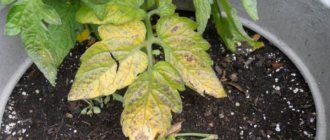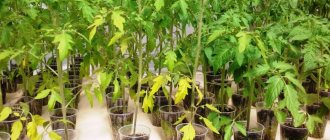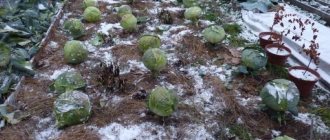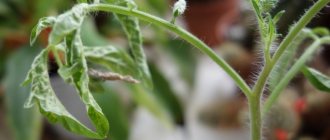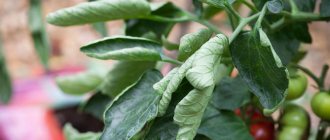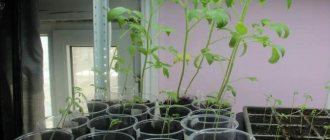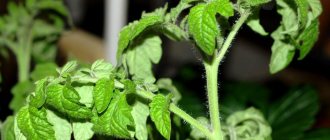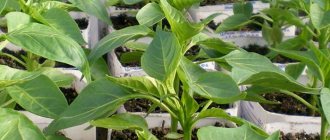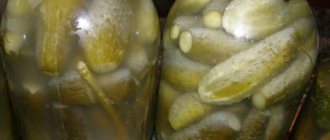Tomatoes are a heat-loving crop, so in temperate climates, gardeners grow vegetables in shelters: tunnels, film or polycarbonate greenhouses. To get a harvest in short summer conditions, use the seedling method. With the arrival of stable heat, the culture is transferred to a permanent place.
At each stage of growing tomatoes, it is important to maintain a certain temperature regime. Both cold and heat are dangerous, so summer residents make every effort to avoid temperature changes and try to provide comfortable conditions for seedlings and adult plants.
Features of the temperature regime for the crop
The historical homeland of tomatoes is South America. It is clear that in the conditions of most climatic zones of Russia, crops require shelter from the cold. But even in greenhouses, the microclimate must be controlled, otherwise the plants will “burn” in the heat.
It is believed that the optimal indicators for tomatoes are as follows:
- during the day - +20 ºC...+23 ºC;
- at night - +16 ºC…+18 ºC.
In this mode (provided there is sufficient lighting, adequate nutrition, and watering), the tomatoes develop well and bear fruit.
Critical values:
- +10 ºC – stop in growth and development;
- +40 ºC…+43 ºC and above, as well as +5 ºC - disruption of vital processes, then death of the plant;
- destructive indicators for tomatoes are below -0.5 °C.
At temperatures above +30 ºC and below +13 ºC, tomatoes stop forming new buds and the ovary falls off. Due to the heat, pollen becomes sterile. At low temperatures, it does not ripen and the process of fruit formation is disrupted. Conversely, a stable temperature regime without sudden changes promotes normal plant development, abundant flowering, and fruit formation.
The phase of growing tomato seedlings has its own subtleties. Beginning gardeners often make the mistake of creating a high temperature regime. This is wrong, as it leads to stretched seedlings, diseases, and unhealthy plant appearance.
After sowing the seeds (in boxes or containers), the temperature is maintained at +20 ºC…+23 ºC. As soon as the shoots appear, the temperature is reduced to +16 ºC...+18 ºC - to prevent the tomatoes from stretching. The boxes are placed on the windowsill; if necessary, phyto- or LED lamps are installed.
On a note! A decrease in temperature, like picking, not only prevents seedlings from stretching, but also promotes active growth of the root system.
After about 5-6 days, the indicators change, bringing them to the optimal regime: +20 ºC…+22 ºC - during the day; +16 ºC…+18 ºC - at night.
Approximately 10-14 days before planting seedlings, plants begin to harden. The procedure is important, as it helps to avoid stress and improves the adaptation of tomatoes to new conditions.
From warm rooms, pots or boxes with seedlings are taken out into the fresh air (open veranda, loggia, balcony or street). The air temperature should be within +15 ºC…+17 ºC. In the first days, harden for no more than 20-30 minutes, gradually increasing the duration. If the weather permits, then after 5-7 days the seedlings are left overnight. The minimum temperature for tomato seedlings is not lower than +10 ºC.
During hardening, plants get used to sunlight, a slight breeze, and street temperatures. Planting such seedlings will be less painful, and the plants will grow faster.
Shoots and seedlings
First of all, you need to wait for the tomato to hatch. Do not remove the film or glass from the box until the first shoots appear. This process will take at least a week. All this time, the warm room and the greenhouse effect under the cover will create the required temperature for the sprouts to hatch.
After the first shoots have finally appeared, you should move them to a warm, well-lit, but at the same time cool place. Most often this is an ordinary window sill. You must provide your seedlings not only with the optimal temperature, but also with enough light. Why? Because with a lack of light, the young growth will stretch out, and its stems will become thin and weak. Lack of heat affects development itself - it slows down.
The optimal temperature for normal growth during the day should be at least 22 degrees Celsius and about 18 at night. When the time comes for picking (usually after the formation of two or three leaves), after it, reduce the daytime temperature by 1-2 degrees. This will slow down development and prevent the young animals from outgrowing their cups.
Temperature conditions in the garden bed and in the greenhouse
A joyful moment for gardeners is the transfer of seedlings to a permanent place. Typically, low-growing varieties and hybrids are planted in beds (in open ground) or low tunnels or greenhouses. For indeterminate tomatoes, a place is prepared in greenhouses by constructing trellises in advance.
Experienced summer residents know how important it is to observe temperature indicators indoors, avoiding overheating and hypothermia of plants. According to many reviews, it is sometimes easier to grow tomatoes in garden beds, although the yield in shelter will, of course, be higher.
Temperature conditions in an unheated greenhouse:
- +25 ºC…+30 ºC - during the day;
- +18 ºC…+20 ºC - at night.
Exceeding +30 ºC leads to the fall of the ovaries and lack of flowering.
Desirable indicators for tomatoes in open ground:
- +20 ºC…+22 ºC - during the day;
- not lower than +16 ºC - at night.
If cold weather and sub-zero temperatures are expected, the plants in the beds are covered with non-woven material.
Cucumber seedlings - growing temperature
Cucumbers are also a heat-loving crop; sprouts appear on the 4-6th day after planting. The higher the air temperature, the faster the seedlings will appear. This vegetable needs little time to please us with its harvest; approximately 50 or 60 days pass from the moment the first shoots peck until the fruiting period.
Acceptable indicators for the appearance of sprouts are +25..+30°C. After germination, the temperature for cucumber seedlings should vary from +20°C to +23°C. No more is needed, because excess heat and lack of light can cause the bushes to stretch. Plants need to be ventilated (open the window), and then taken out to the balcony to harden.
When 4 full leaves appear, the cucumbers are transplanted into open ground; the soil for them should be warmed up to +18°C. If, with the onset of night, the air temperature drops below +15, then it is strongly recommended to cover the beds with film.
Cucumbers do not tolerate even minimal cold snaps (and dampness); at +15°C their growth stops, and at +10°C and below they begin to get sick and subsequently die. Since cucumbers grow at night, the temperature at this time of day should be at least +18°C.
For cucumbers, the temperature difference between day and night is very important; if it is more than 7 degrees, then the seedlings become stressed. Therefore, again, do not forget about covering material for the beds at night. In addition, provide the bushes with regular moderate watering.
Saving tomatoes from frost
The weather in Russian regions is unpredictable, and although summer residents watch what the expected temperature is and closely monitor forecasts, they must be prepared for various “surprises.” Even in June, a temperature at which tomato seedlings freeze is possible, and sudden changes (cold at night, hot during the day) are typical for many areas.
To prevent tomatoes (in open ground) from getting caught in the cold, small fires are lit in the area. The smoke from them fumigates and warms the plants, so light frosts are not dangerous even for young seedlings.
On a note! When making fires, follow safety rules and be sure to control the combustion process.
In greenhouses, special heating tablets are often used, which are set on fire at night. The plantings are also additionally covered with lutrasil or other non-woven material. Small plants are covered from above; for adult tomatoes, a frame is first built. The fabric is removed during the day, otherwise it is easy to cause overheating of the plants.
Instead of non-woven material, it is allowed to use bubble wrap, old blankets or bedspreads. Water bottles are suitable for warming the air in greenhouses. Filled plastic containers with a volume of 1.5-2 liters are placed in the beds around the greenhouse. During the day, the water will heat up, and at night, as it cools, it will give off heat. Instead of bottles, you can place small barrels or tanks in shelters.
For small plants (for example, immediately after planting seedlings) five-liter plastic eggplants are often used in the garden bed and in the greenhouse. The neck is cut off, and the container is placed on the bush so that it is inside the “greenhouse”. The bottles are removed during the day, otherwise the plants will overheat in the sun.
If it happens that tomato seedlings are frozen, then act immediately:
- cover plantings from the sun's rays;
- carefully remove the affected areas;
- add nitrogen-containing compounds (potassium humate, infusion of chicken manure);
- the surviving plants are treated with Epin, the Healthy Garden preparation.
Even if it is not possible to revive all the seedlings, some of the tomatoes will be saved. Tomatoes quickly “move away” from such troubles and produce new roots.
Air temperature requirements
At each stage of planting seedlings, there are certain temperature requirements that must be strictly observed.
When planting seeds
The best way to prepare seeds so that they germinate faster is the germination method. This procedure is done before sowing and significantly increases the percentage of germination. The optimal temperature for this is 26 degrees Celsius, but not higher than 30. To ensure that the seeds germinate without problems, place the container with them and a cloth on a warm radiator. Don't forget to periodically wet it in warm water. Before sowing, the daytime temperature should be no more than 26 degrees Celsius.
After germination
The temperature is adjusted according to the weeks. In the first week after planting the seeds, the daytime temperature should be at least 15 degrees Celsius, and the night temperature should be at least 12-14. The second week is very important for seedlings, since the daytime temperature must gradually increase for the plant to develop normally: at least 22 degrees. If it is a cloudy day outside, the temperature should be at least 18 degrees; at night - 17-19.
After the pick
As was written above, in the first days after transplanting seedlings into separate containers, the daytime temperature is first reduced by 1-2 degrees. If the day is clear, it should be at least 22 degrees; in cloudy weather - at least 17; at night - at least 13 degrees Celsius.
First aid for fever
Despite the fact that tomatoes come from hot countries, too high temperatures have a negative impact on plant development. If the weather is hot for a long time and the thermometer shows above +30 ºC, you need to take care of protecting the tomato bushes in the beds:
- cover with non-woven material of low density;
- mulch the row spacing and soil around plant stems with peat, compost or grass.
Some gardeners plant protective “strips” of corn and grapes next to tomato beds. They will not only provide protection from the hot rays of the sun, but also protect from winds and heavy rainfall.
To maintain a stable regime and prevent overheating of plants, the following techniques are effective in shelters:
- ventilation Greenhouses should have windows and transoms that open on hot days. To protect against strong drafts, doors are covered with lutrasil or other non-woven material;
- mulching beds. Sawdust, mowed grass, rotted compost, and hay are suitable for tomatoes. Layer - 3-4 cm.
Thermometers must be hung in shelters. Whether or not tomato seedlings will suffer from cold weather or heat largely depends on what temperature we are talking about - plants can withstand a lot, but not everything. It is important how skillfully the gardener operates. Sprinkling of plants is excluded, since after it sunburn and various diseases are possible.
Optimal night temperature
If for several nights the temperature dropped below +10°C, and the plant looks quite healthy outwardly, this does not mean that it has not suffered stress, which causes:
- Suspension of growth;
- Stopping pollination.
If the tomato has suffered frost or heat beyond + 43°C then:
- Inflorescences fall off;
- Leaves die;
- Immunity to diseases decreases.
If the plant has suffered stress, it takes at least a week to recover, and the harvest date is postponed. You should know that it is not only important how warm the air is, but also the soil.
When the soil is heated to 20°C, all metabolic processes function normally.
But lowering this level by 4-5°C complicates the absorption of nitrogen and phosphorus by the roots. And when it drops to +10-12°C, metabolic processes stop altogether.
Temperature and humidity: finding balance
Speaking about the need to maintain a stable regime, it is important not to forget about air humidity. As with temperature, sudden changes are excluded. Tomatoes do not like high humidity, they begin to get sick and stop growing. Therefore, water only at the roots and between the rows, avoiding drops of moisture on the leaves, ovaries, and fruits. After irrigation, be sure to ventilate the shelters.
In film greenhouses, plantings are watered in the morning. If you do this in the evening, condensation will form by night. In polycarbonate shelters, afternoon watering is practiced (necessarily with warm, settled water).
The best humidity indicator for tomatoes is 60-70%. If the value exceeds 85-90%, then the plants’ pollen cakes, clumps, and is not separated from the stamens. The combination of low temperature and high humidity causes the ovaries to fall off and the occurrence of fungal diseases. Ripe fruits are watery, sour, tasteless.
At low humidity (25-30%), the process of pollen germination stops, it dries out, so the flowers are not pollinated. Fruit formation slows down and yields drop. It is important to maintain a balance of temperature and humidity, avoiding critical values and sudden changes.
Information about temperature conditions for tomatoes will help gardeners grow the crop correctly and create comfortable conditions for their favorite vegetable. Only in this case will the harvest please you!
At what temperature do tomatoes grow?
If the greenhouse is small, then there is always the danger of too sudden transitions from heat to cold. This is a critical disadvantage of all greenhouses, which is almost impossible to correct. That is why they are recommended for use in those regions where spring still comes early. In cold areas, where prolonged frosts are quite possible even in May, it is still better to glaze the greenhouse.
Video: Tomato seedlings bloomed - what to do
Modern technology makes it much easier for the gardener to care for seedlings. So, using automation, you can set the opening/closing mode of the windows. They need to close when the air temperature drops below +18°C, and open when heated above +25°C. Under such conditions, the risk of overheating or hypothermia is minimized.
Important! It is known that tomato bushes are able to survive even in heat up to +40°C. But this does not benefit them. It has been established that when the air is heated to more than +35°C, the process of pollen maturation stops, as well as pollination. If an increase in temperature is detected, it is best to immediately open all doors and windows to create the strongest possible draft. All plants urgently need to be watered abundantly. This will reduce the temperature by approximately 9°C.
Even young plants are not afraid of drafts; on the contrary, the benefits of a fresh breeze, which will clean the air and lower the humidity in the greenhouse, are very significant. If the humidity is too high, then the pollen simply will not be able to detach itself from the stamen and transfer to the pistil, even in self-pollinating varieties. Open windows will allow bees to enter the greenhouse, which are the best pollinators for all vegetable and garden crops.
Tomato blossom
When the air temperature rises above +30°C, flowering will first slow down and then stop completely. Already formed ovaries will dry out and fall off. At such a high temperature, pollen cannot ripen, which means pollination of new flowers will not occur.
Note! Not only air temperature matters, but also its humidity. In open ground conditions, the optimal air humidity is 60%. When this indicator increases to 90%, pollen will no longer be freely separated from the stamens; on the contrary, it will begin to stick together into useless clumps. Too high humidity is generally detrimental to tomato plantings, as it leads to an increased risk of the appearance and spread of all kinds of fungal infections.
Too low humidity (below 30%) is also bad, since pollen that gets on the pistils will not be able to germinate in such dry conditions. The flowers will remain unpollinated and the ovaries will not form until the air is humidified to the required minimum value.
The article examines in detail what temperature tomato seedlings can withstand. The easiest way for a gardener to provide optimal temperature conditions for the growth of tomato seedlings is in the greenhouse. In the open ground, certain risks always exist, since it is not yet possible to give a 100% reliable weather forecast for a very long period. If you want to reduce the risk of seedling death to a minimum, you can shift the timing of planting young seedlings in open ground to the summer, but this will also delay the timing of harvest.
3 2 votes
Article rating
Growing in a greenhouse
For planting in greenhouses, seedlings grown at home are also taken, since it is not possible to grow tomatoes in a greenhouse without seedlings in the conditions of the middle zone.
By the time tomato seedlings are planted in greenhouses, daytime temperatures should not be lower than +22C+26C, and night temperatures should not fall below +10C.
Seedlings aged 60-65 days are planted at the rate of 8 plants per 1 m2, in two rows. In order to get an earlier harvest, seedlings are planted more densely, leaving a distance of 15-20 cm between plants, and 40 cm between rows. With this method of planting, the bushes are formed into one stem, pinched above the second flower cluster. To obtain such an early harvest, only early ripening varieties such as “Nevsky”, “Moskvich”, “Tambovsky Harvest 340”, “Sever” are suitable.
Just like in a greenhouse, you need to prepare the soil in a greenhouse, since growing tomatoes in greenhouses requires a lot of fertilizer. Before digging, add 70-80 g of ammonium nitrate, 50 g of potassium fertilizer (without chlorine) and 150 g of superphosphate, based on the area of the frame.
How to save frozen seedlings
If you still failed to protect the tomato seedlings from spring frosts and they froze, then you need to take urgent measures to help revive them. The fact is that tomatoes are among the plants that regenerate well. And if they are properly processed and given good care, then the grown bushes will give a good harvest.
But the seedlings can only be saved if the frost was not lower than minus 3 degrees. If the bushes are covered with a crust of ice, then it is no longer possible to revive them.
Trimming
During freezing, tomatoes most often do not freeze completely. As a rule, only their upper part suffers, which becomes dark and droops.
To resuscitate damaged seedlings, you must adhere to the following action plan:
- The part of the stem that has been damaged by frost and turned dark must be removed. To do this, you need to use a sharp, pre-sterilized instrument.
- If the bushes have been very damaged by frost, they will need regular feeding with a solution of mullein or chicken droppings.
- During the first 7 days, while the plants have not yet recovered, it is recommended to build a small greenhouse over them, consisting of metal arcs and film.
Also, very often, Epin’s solution is used to save frozen tomatoes, which helps even in the most hopeless cases.
This adaptogen and biostimulant is very effective when seedlings freeze.
- Prepare the solution, strictly following the instructions on the package with the drug.
- Add a pinch of citric acid to the finished mixture.
- Late in the evening or early in the morning, spray the bushes with the resulting solution, after watering them.
- Treatment cannot be carried out during the day.
Pouring
To revive frozen seedlings, they need to be doused with cold water before the sun rises. You need to pour over each bush, trying to get the liquid on all the leaves and shoots. When the dousing procedure is completed, do not touch the bushes so as not to shake off drops of water from them.
This procedure will help restore lost moisture to plants, and it also helps stimulate sap flow.
Planting seedlings in the ground
It is permissible to plant tomatoes in heated greenhouses with good thermal insulation in late April - early May. In unheated, but additionally insulated - in the first weeks of May. In cold weather - from mid-May. Planting is carried out if the air temperature is maintained at least 20-25 °C, and in the soil at a depth of 15-20 cm - at least 12-13 °C.
Soil preparation
It is better to prepare the soil for planting tomatoes in a greenhouse or greenhouse in the fall. It is preferable to grow the crop in soils with normal acidity (pH 6.5-7). To improve fertility on loamy or clay soils per square meter. per meter of plantation is filled with a bucket of humus and turf. For loosening, add a bucket of sawdust and half a bucket of coarse sand.
Also in the fall, the soil is enriched with minerals:
- 1.5-2 cups of wood ash;
- 2-3 tbsp. spoons of Superphosphate;
- Art. a spoonful of potassium sulfate;
- a teaspoon of urea.
Over the winter, fertilizers will dissolve and will be more easily absorbed by plants. The soil with additives is carefully dug up and ridges 20-30 cm high or holes 15 cm deep are prepared. If desired, you can fill the holes prepared for planting with ready-made purchased soil based on turf or humus at the rate of 3-4 kg per square meter. meter.
Planting scheme
On each side of the central aisle of a greenhouse, two rows of plantings are usually arranged, taking into account the growth characteristics of different varieties:
- Low-growing (standard) quickly ripening varieties, bushing into two or three stems, are planted in a checkerboard pattern. Leave 35-40 cm between bushes, the interval between rows is 50-55 cm.
- Medium-sized species are planted at intervals of 20 cm in rows, and 45-50 cm between rows.
- Giant (indeterminate) varieties are also recommended to be planted in a checkerboard pattern. The interval in the row is 55-60 cm, row spacing is 75-80 cm.
When breeding different varieties of tomatoes, it makes sense to use a universal scheme, where all the bushes are formed into one stem:
- In the row closest to the walls of the greenhouse, early ripening determinate varieties are rooted.
- Tall tomatoes are planted in the row closest to the aisle. Dwarf standard species are planted with them at intervals of 25 cm.
The order of planting seedlings
The holes are spilled with a solution of potassium permanganate (1 g of powder per 10 liters of water) at the rate of 1-1.5 liters for each. Tomato bushes are rooted in soil slurry with a lump of earth from a container or together with peat pots.
Tomato bushes are planted with inflorescences facing the aisle of the greenhouse. This way the fruits will be less shaded by the foliage, making artificial pollination easier.
After planting, the holes are sprinkled with soil and compacted around the root. The surface of the bed is mulched. Overgrown seedlings should not be laid on their side. It is better to deepen it further without filling the hole, and when the plants take root, fill the hole with soil.
The video shows planting tomato seedlings in a greenhouse. Filmed by the Gardener Newspaper channel.
